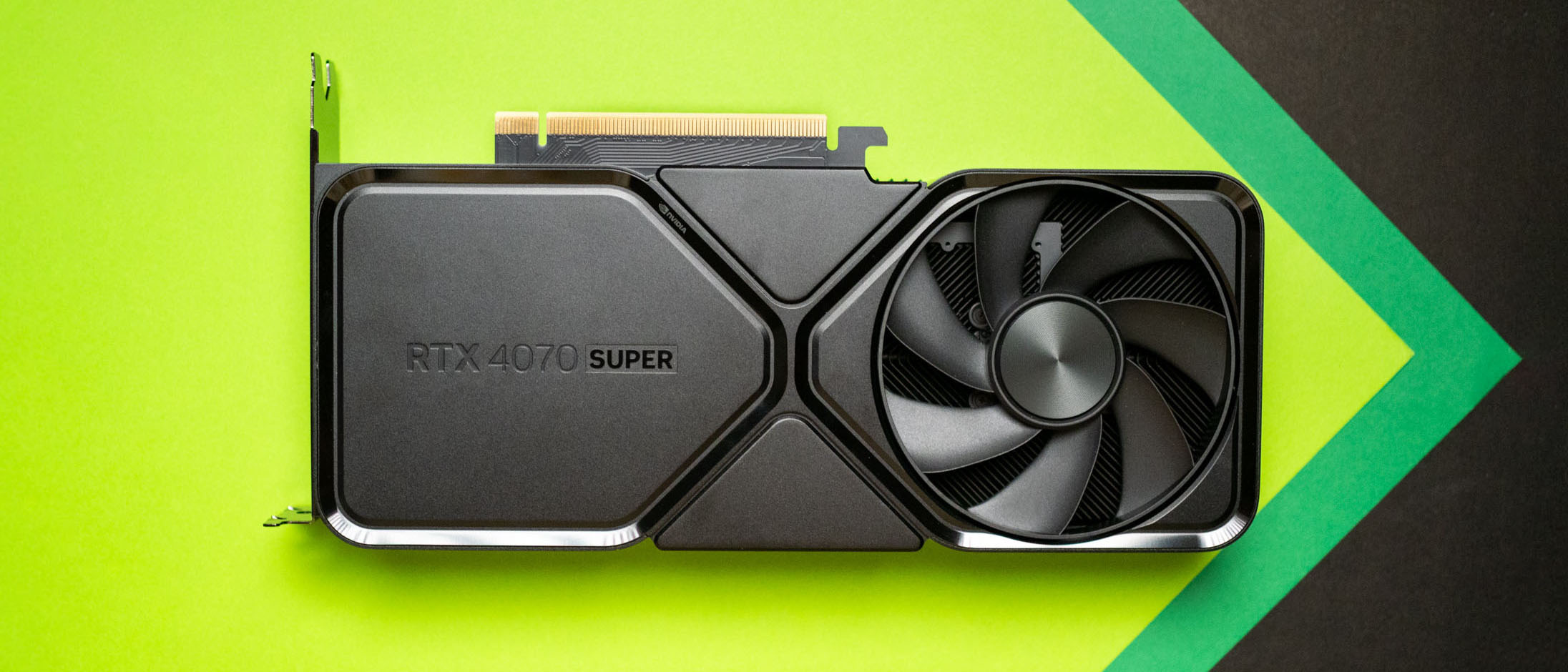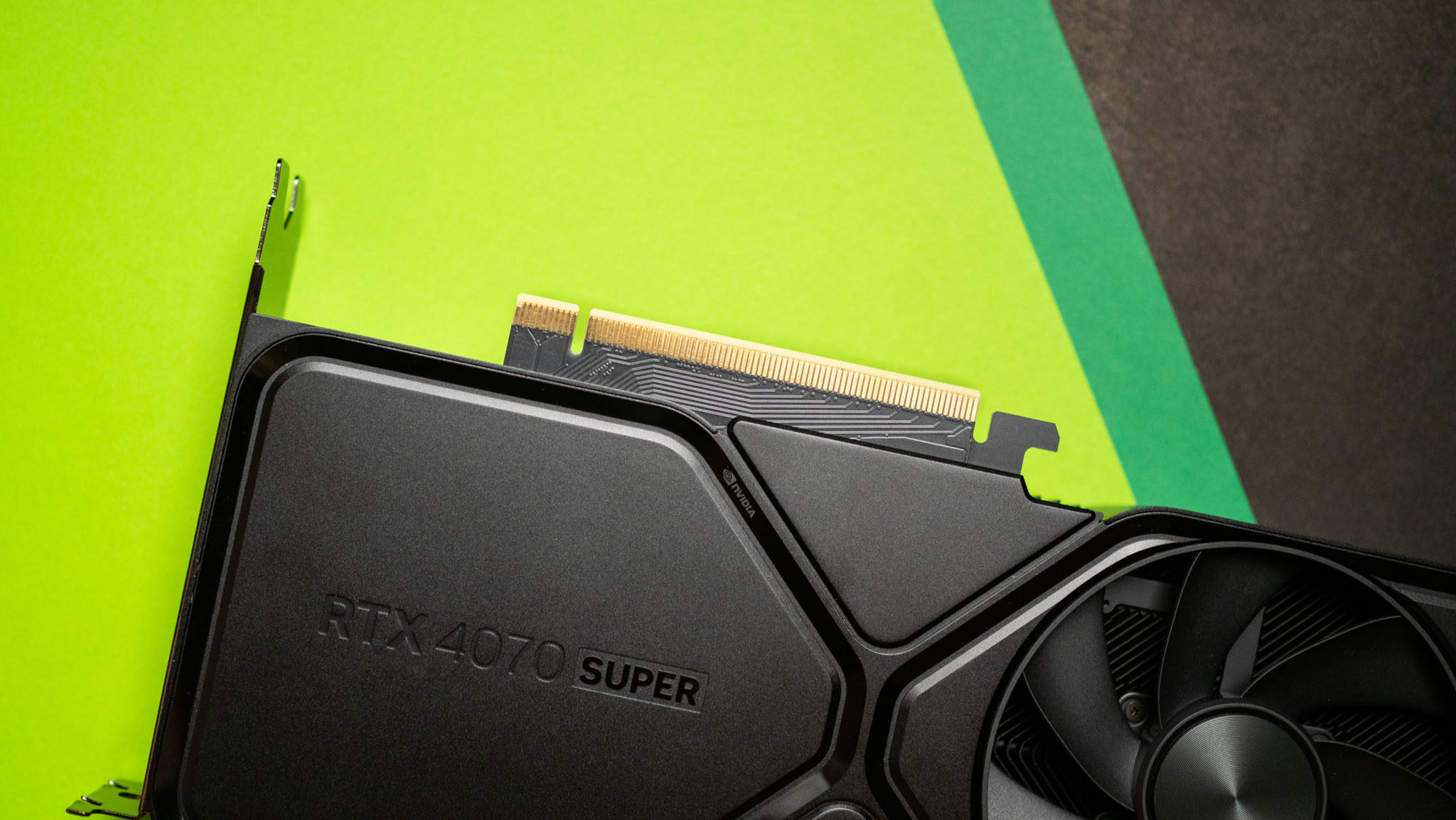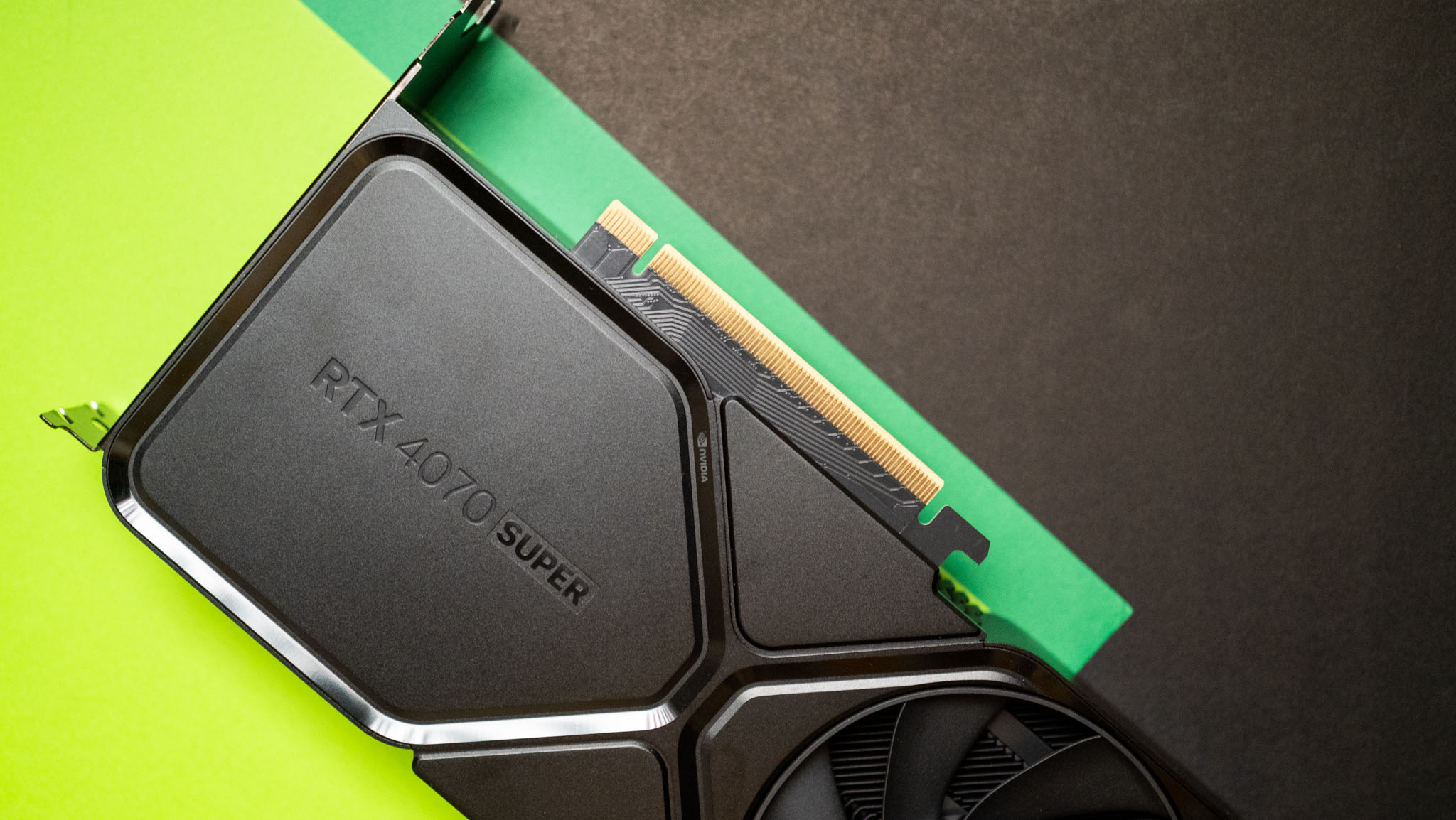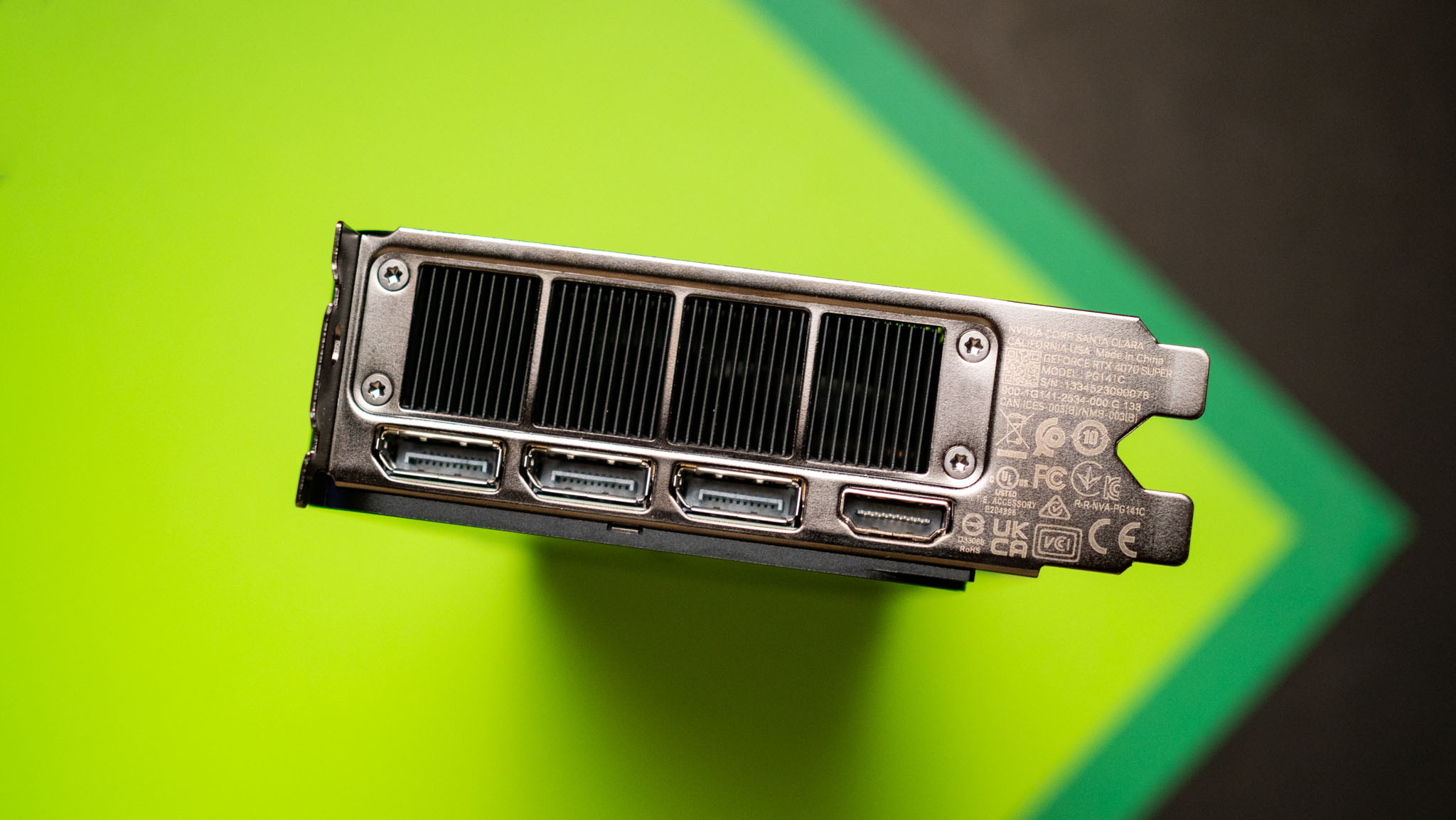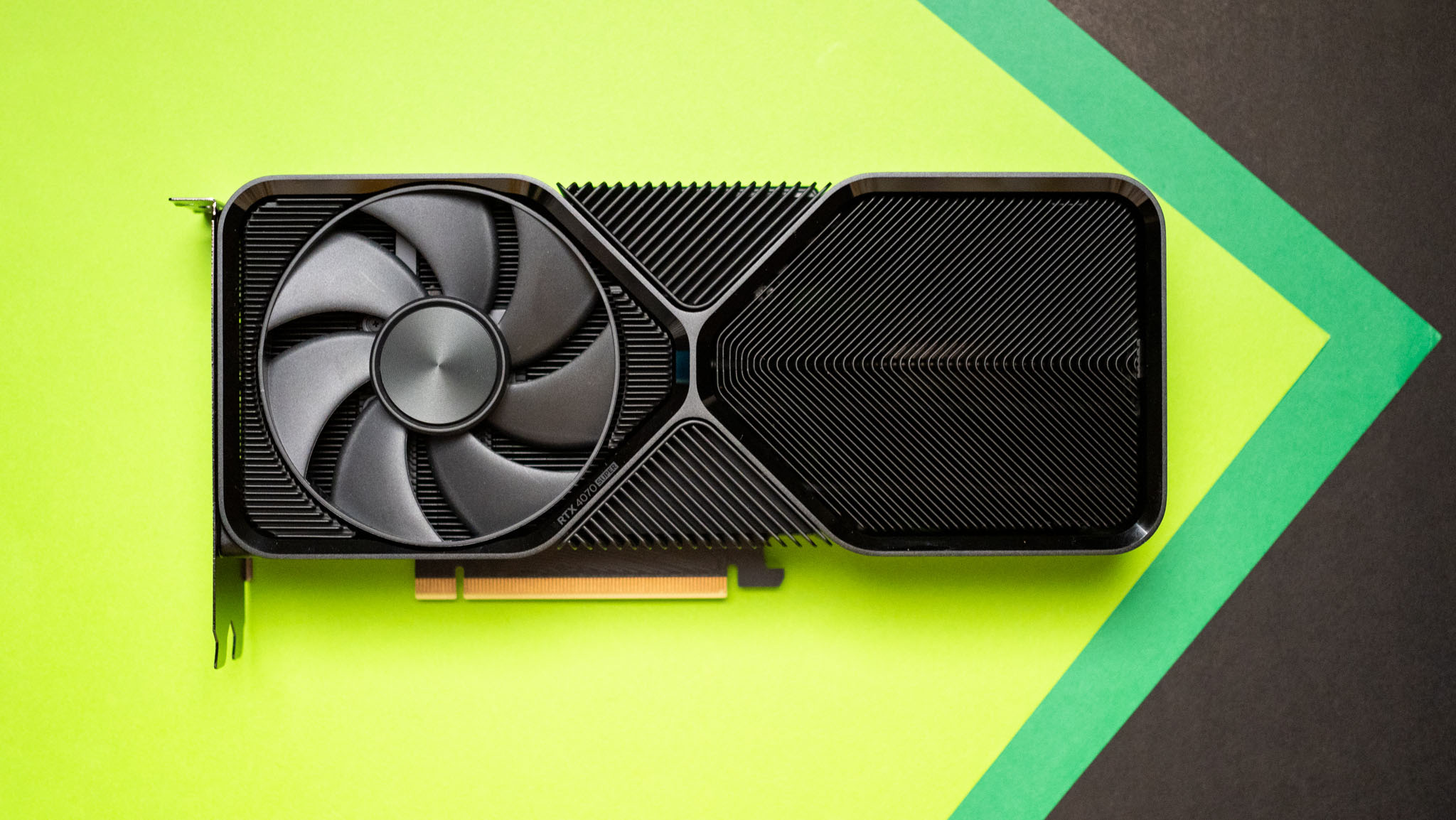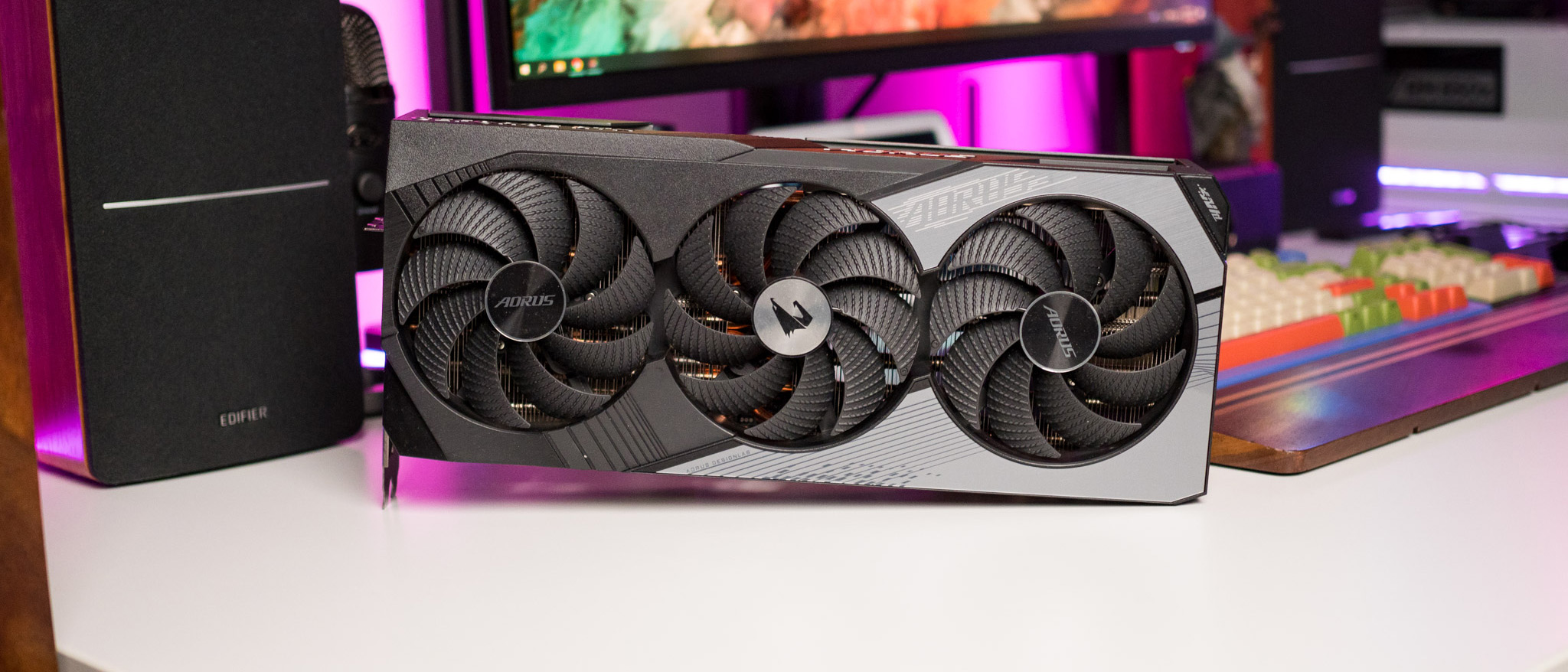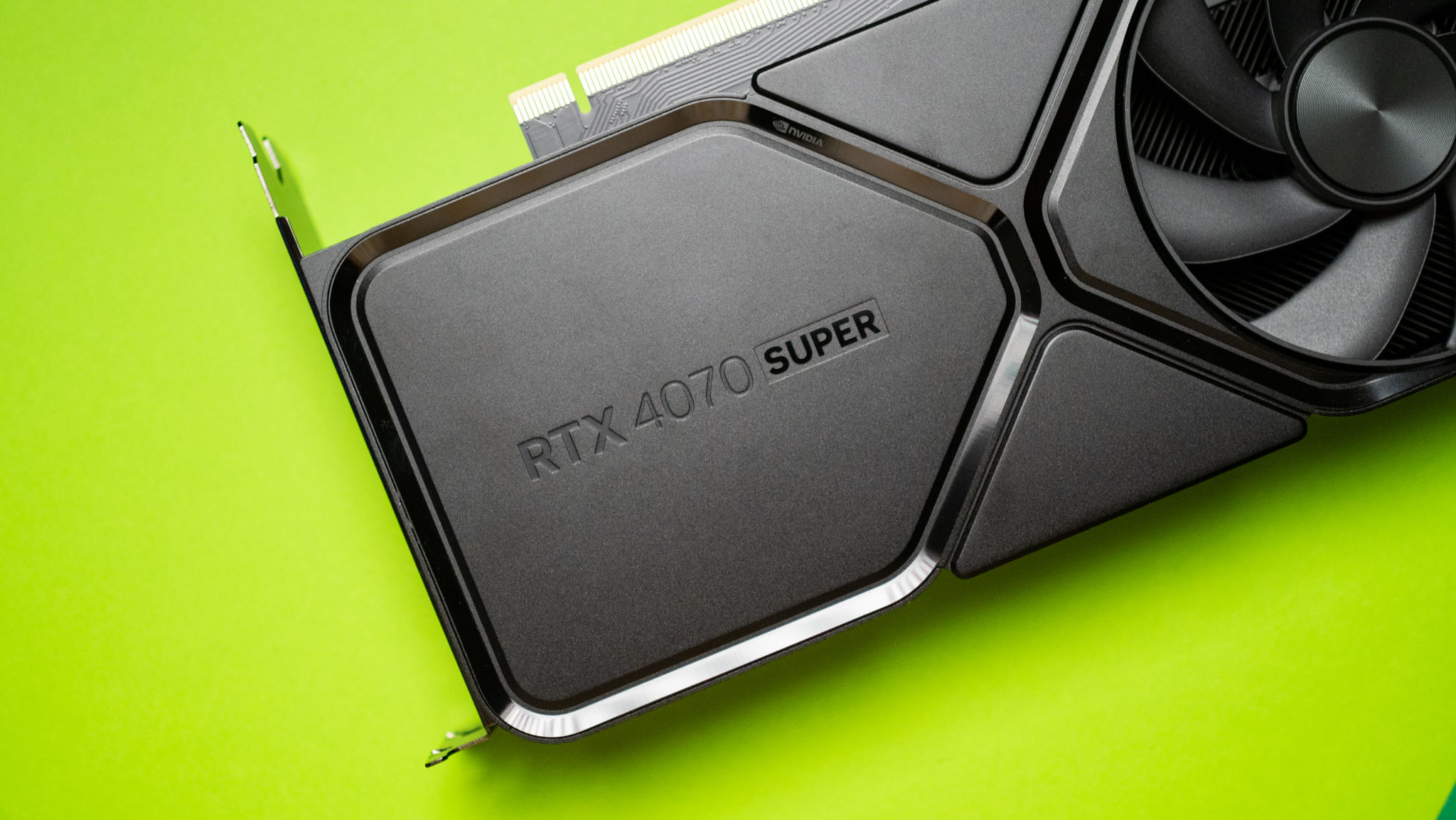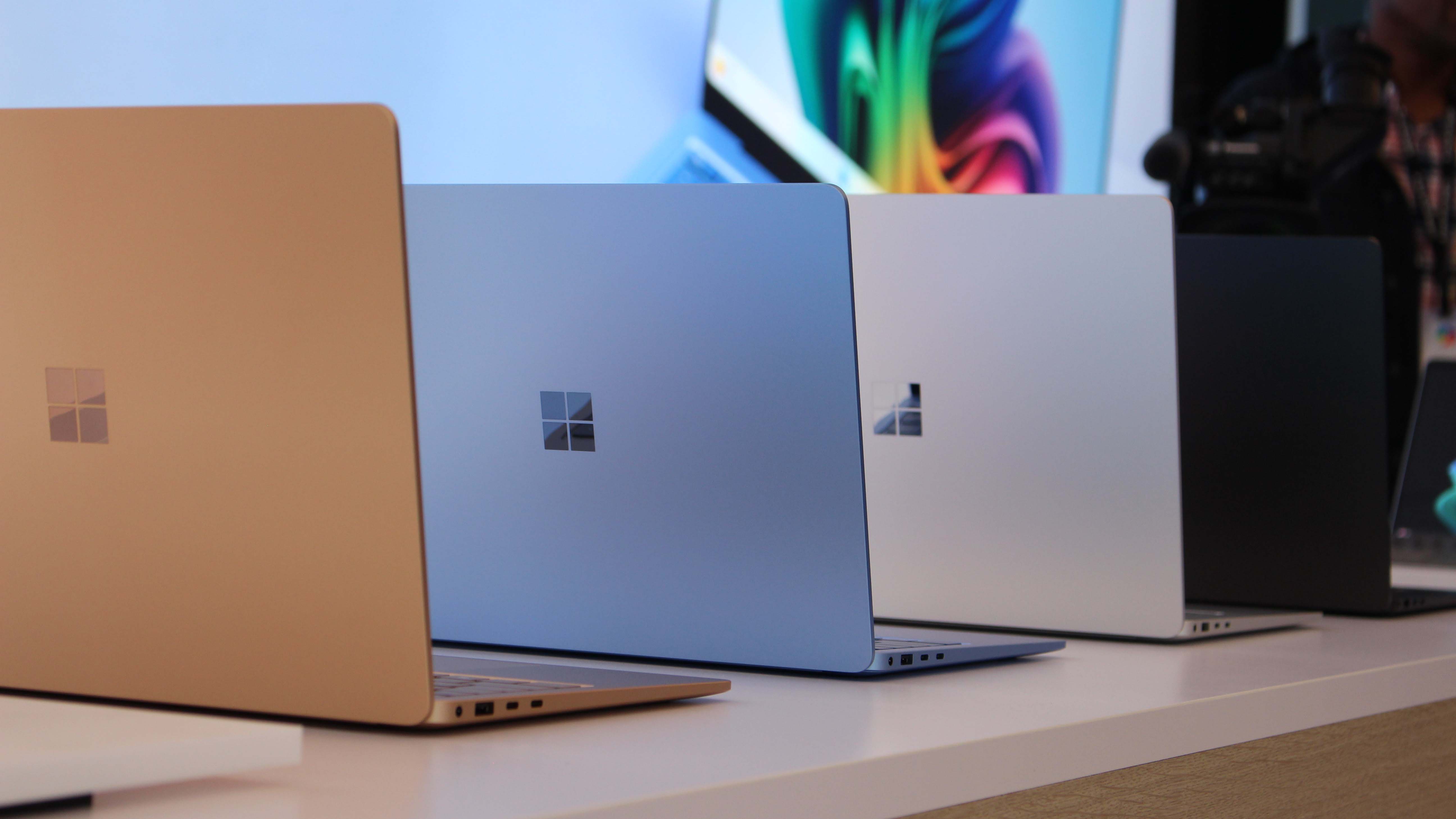Windows Central Verdict
The RTX 4070 Super delivers sizeable gains over the standard model, and the best part is that it doesn't cost more. The card is great for 1440p gaming, and it has all the best features of the RTX 40 series — you get AV1 decode, and DLSS 3 Frame Generation continues to make a noticeable difference in visually demanding games. There's also a new all-black design for the Founders Edition card that looks fabulous, and while you miss out on 16GB of VRAM, that's the only notable drawback here. If you want the best value in NVIDIA's RTX 40 series, this is the card to buy.
Pros
- +
Sizeable performance gains over standard RTX 4070
- +
Ideally suited for 1440p gaming
- +
HDMI 2.1 and AV1 decode
- +
DLSS 3 Frame Generation is a huge differentiator
- +
Great design
- +
Terrific value
Cons
- -
16GB VRAM would have been ideal
Why you can trust Windows Central
1. Price and release date
2. Overview
3. Specs
4. Design
5. Performance
6. The competition
7. Should you buy it?
NVIDIA unveiled the RTX 40 series a year and a half ago, bringing sizeable upgrades across the board and huge price hikes. While the availability of these cards had stabilized throughout the course of 2023, increased demand meant that there wasn't much in the way of deals, but if you're looking to maximize value and are in need of an upgrade in 2024, there's good news.
NVIDIA is offering a much better value with the introduction of the RTX 40 Super GPUs. There are three models in total in this series, but the RTX 4070 Super is the most interesting option of the lot; it has 20% more shader cores than the standard version, and it costs just $50 more, debuting at $599. The boost in shader cores gives the 4070 Super a significant advantage over the regular model, with performance gains of up to 15% in most titles, making it a terrific choice for 1440p gaming.
The launch of the 4070 Super effectively undermines the 4070 Ti, so NVIDIA is taking that model off shelves and slotting in the 4070 Ti Super instead. The chip vendor is rejigging its mid-range portfolio, with the RTX 4070 now at the bottom, followed by the 4070 Super, and then the 4070 Ti Super. It's still strange to think that $600 is now considered the mid-range segment, but that's where we are, and subsequent launches will only see prices trending upward.
That said, NVIDIA nailed the brief with the RTX 4070 Super; the GPU offers great overall value, and that just hasn't been the case with most of the launches in the RTX 40 series thus far. So, if you're using an older GPU, this is what you need to know about the 4070 Super.
NVIDIA GeForce RTX 4070 Super FE: Price and release date
NVIDIA unveiled the RTX 40 Super series at CES 2024, and the RTX 4070 Super is joined by the 4070 Ti Super and the 4080 Super. The 4070 Super is now available for $599 at Best Buy in North America for the Founders Edition and select AIB cards, and there are overclocked variants that go up to as much as $689. NVIDIA will continue sales of the regular RTX 4070, with that model still available for $549.
The RTX 4070 Ti Super is also available now, with that GPU retailing for $799 and going up to $949 for overclocked versions. The RTX 4080 Super is going up for sale starting January 31, and it will slot in at $999 for the Founders Edition model, going up to $1,249 for various overclocked models.
NVIDIA GeForce RTX 4070 Super FE: Overview
NVIDIA isn't changing things too much with the RTX 4070 Super, and other than an increase in shader cores, it is practically identical to the standard model. It still uses the AD104 silicon, has 12GB of GDDR6X video memory over a 192-bit interface, and you get the same number of transistors. There are now 7,168 shader units along with 224 TMUs and 80 ROPs, and there's a slight increase in base clocks to 1980MHz (up from 1920MHz).
All the latest news, reviews, and guides for Windows and Xbox diehards.
Because of the increase in the shader cores, the 4070 Super has a TDP of 220W and switches to the 12VHPWR connector. Connectivity is unchanged, and you get three DisplayPort 1.4a ports along with an HDMI 2.1a port at the back. There's hardware-level AV1 decode as well, and the card is manufactured on the same TSMC 5nm node as the rest of the RTX 40 series.
The Ada Lovelace architecture sees the introduction of the Optical Flow Processor, which is pivotal for DLSS 3 Frame Generation, arguably the biggest differentiator for all RTX 40 series cards. The feature allows you to double the framerates by injecting AI-generated frames, and it does so without any noticeable difference in quality.
It would have been great to see 16GB of video memory with this card, as that would have made it the ultimate value in NVIDIA's current portfolio. But it's fair to assume that NVIDIA didn't want to use the AD103 silicon that powers the RTX 4080 here, so it retained 12GB of VRAM.
NVIDIA GeForce RTX 4070 Super FE: Specs
| Category | NVIDIA RTX 4070 Ti NVIDIA RTX 4070 Super | NVIDIA RTX 4070 Super | NVIDIA RTX 4070 |
|---|---|---|---|
| GPU | AD103 | AD104 | AD104 |
| Cores | 8448 | 7168 | 5888 |
| ROPs | 96 | 80 | 64 |
| TFLOPS | 44.1 TFLOPS | 35.4 TFLOPS | 29.15 TFLOPS |
| Core Clock | 2340MHz | 1980MHz | 1920MHz |
| Boost Clock | 2610MHz | 2475MHz | 2475MHz |
| Memory | 16GB GDDR6X | 12GB GDDR6X | 12GB GDDR6X |
| Memory Bus Width | 256-bit | 192-bit | 192-bit |
| Bandwidth | 672.3GB/s | 504.2GB/s | 504.2GB/s |
| Transistors | 45.8 billion | 35.8 billion | 35.8 billion |
| TDP | 285W | 220W | 200W |
| Process Node | TSMC 5nm | TSMC 5nm | TSMC 5nm |
| Price | $799 | $599 | $549 |
NVIDIA GeForce RTX 4070 Super FE: Design
NVIDIA is doing a great job with its Founders Edition cards, and they end up looking much more elegant than a lot of the third-party offerings. These cards have an industrial design that's almost Apple-esque, and NVIDIA deserves credit for nailing the design aesthetic. While the brand isn't making any changes to the overall design, it is decking the RTX 40 Super series in an all-black color option that looks fabulous.
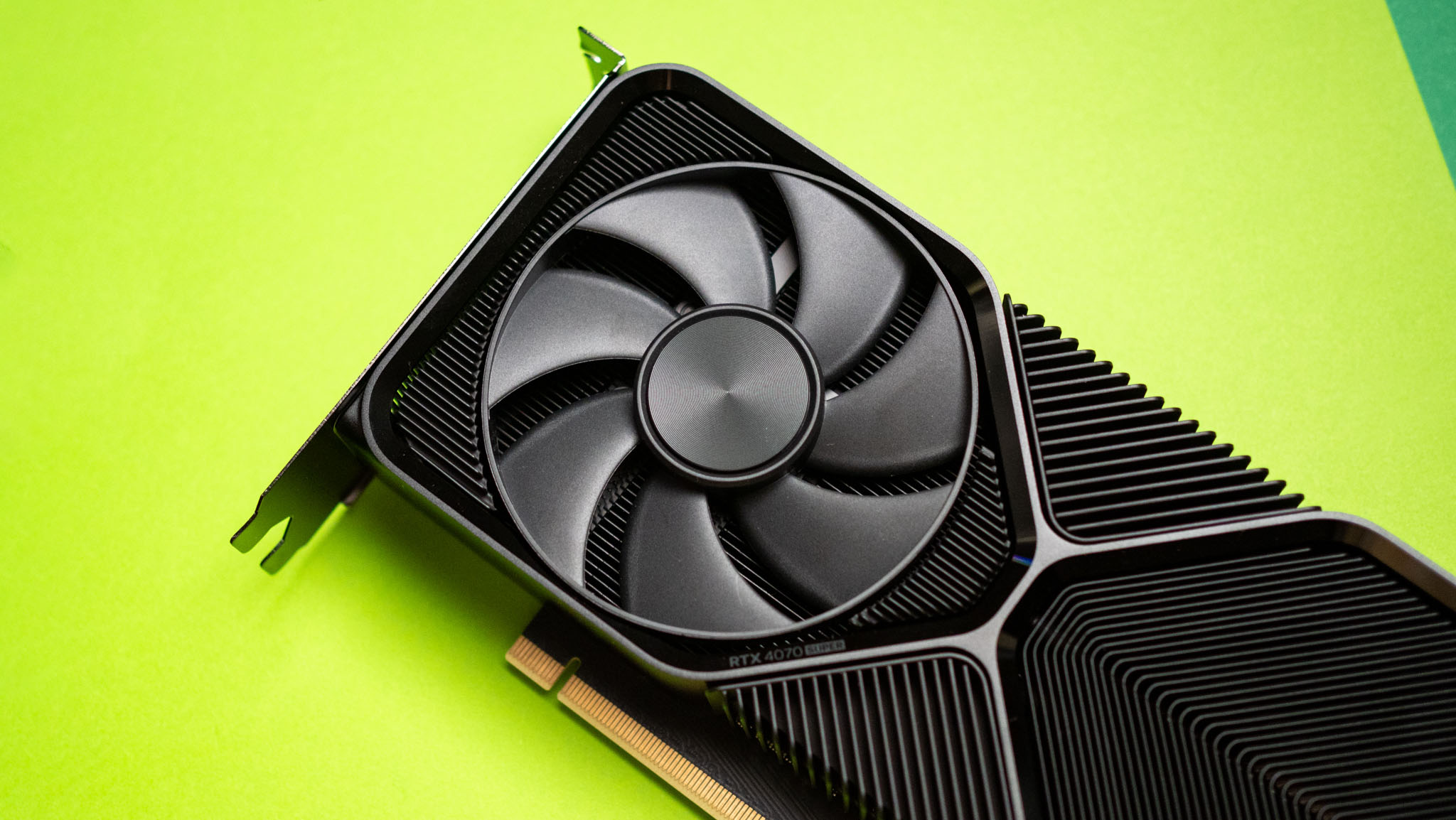
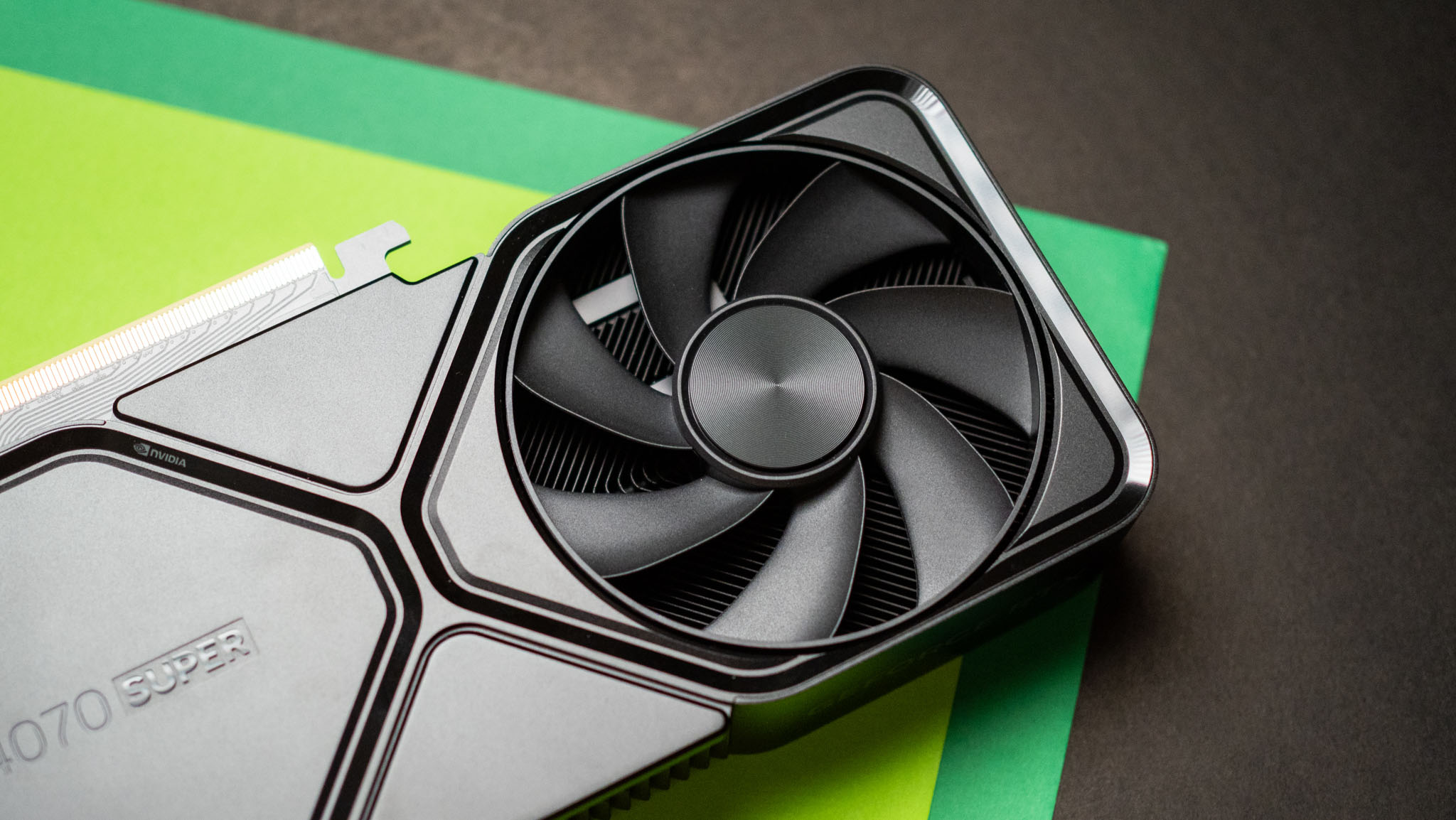
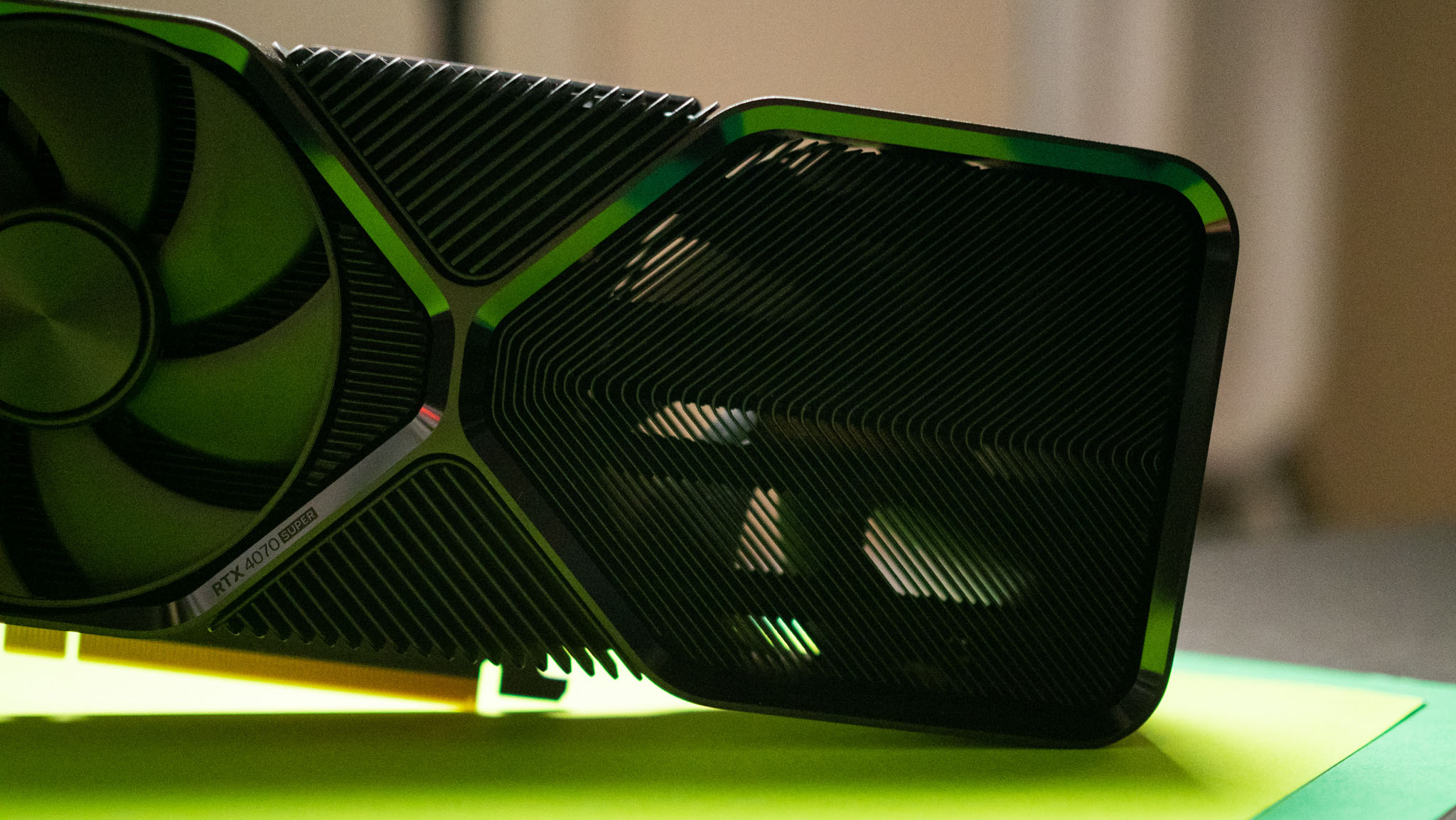
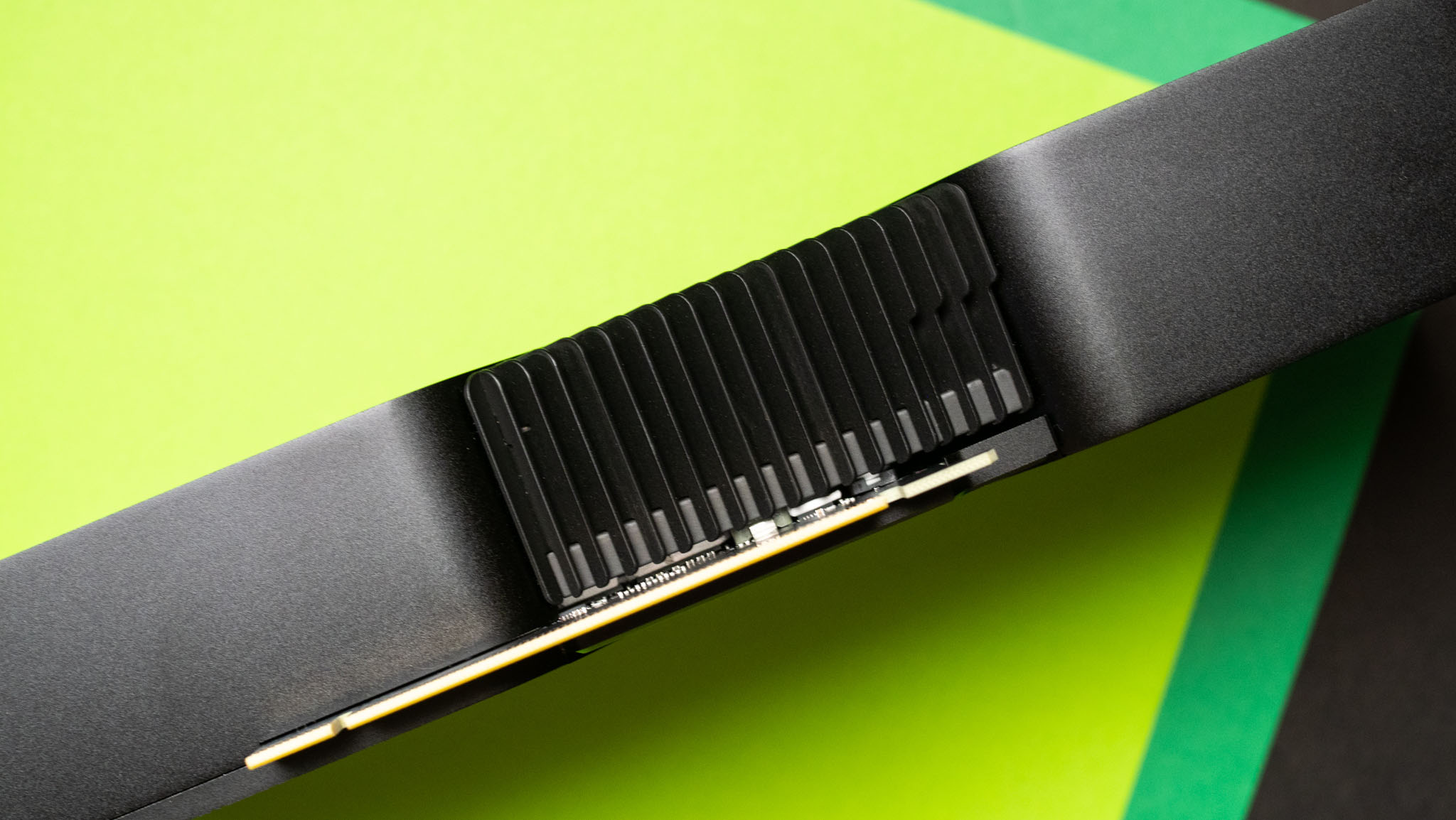
The black color option immediately differentiates the 4070 Super from the standard model, and it just looks plain cool. The Super moniker is engraved on the card, and again, it makes the card look very distinctive. The design is otherwise unchanged, and you get a fan on either side, with the one at the bottom sucking cool air into the GPU and the one on top serving as the exhaust.
Most of the RTX 40 series cards I've used thus far have been absolutely massive, and thankfully, the 4070 Super has a two-slot design that doesn't take up too much room in your case. If you're interested in using the second PCIe connector on your motherboard to slot in a capture card or networking interface, you can easily do that — there's plenty of clearance.
The 4070 Super switches to the 12+4 pin 12VHPWR connector, and NVIDIA bundles an adapter in the box that lets you connect to two 8-pin PCIe cables. While there's no shortage of choices in the market if you're interested in the 4070 Super, the Founders Edition stands out for its relatively small footprint and elegant design. I also have Colorful's 4070 Super, and that card is gargantuan next to NVIDIA's own offering — just like the Colorful RTX 4080 I reviewed last year.
NVIDIA GeForce RTX 4070 Super FE: Performance
The RTX 4070 Super is closer to the 4070 Ti than the standard 4070 when it comes to performance figures, and it consumes a smidgen more power than the regular model. The card consumes 11W of power while idling, going up to 17W when playing videos, and up to 215W under full load. The switch to a 5nm node has led to decent efficiency gains with the RTX 40 series, and that's no different here.
What you will like more is the performance; the 4070 Super delivers up to a heady 15% uptick over the regular model, and that's what makes this card such a good option right now. What's particularly interesting is that it is able to measure up to the RTX 3090, coming close to even the 3090 Ti in most games at 1440p. More than anything else, this shows the generational gains made possible with the RTX 40 series.
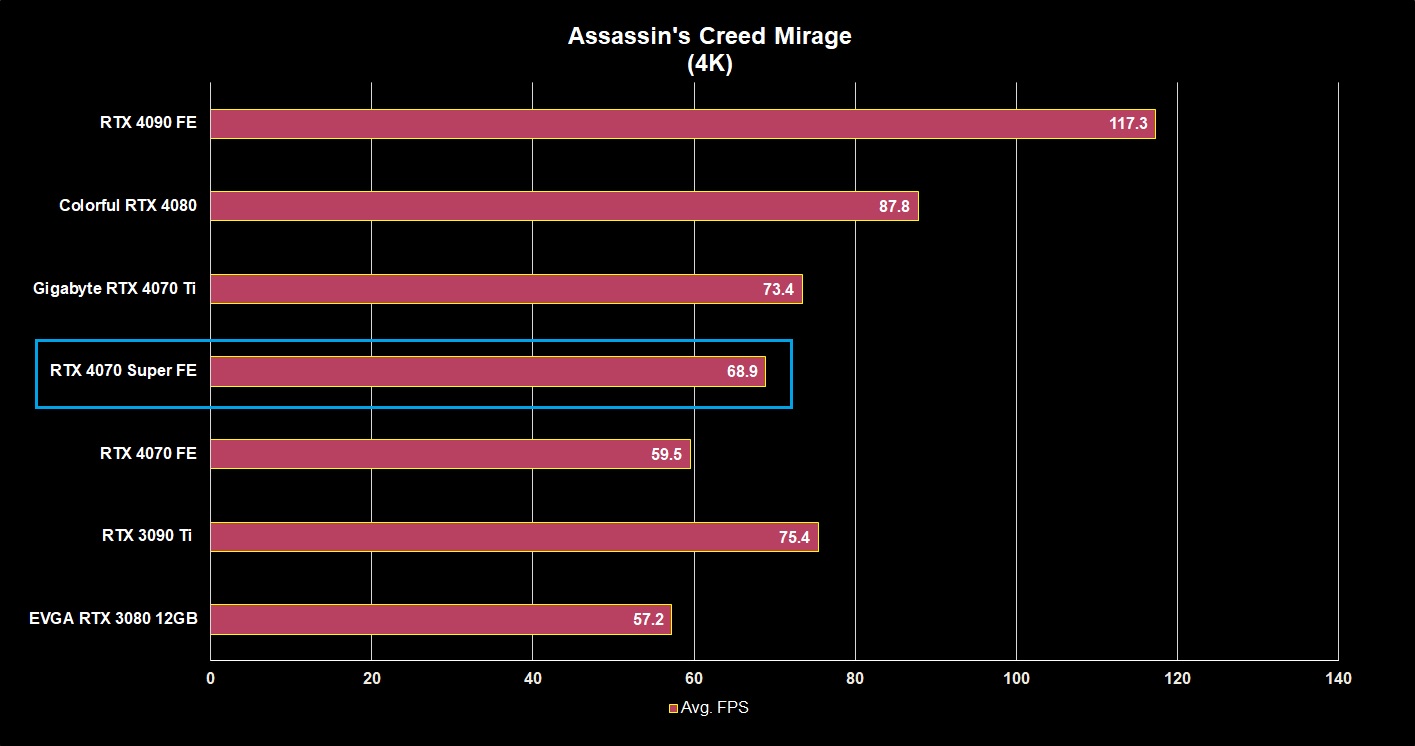
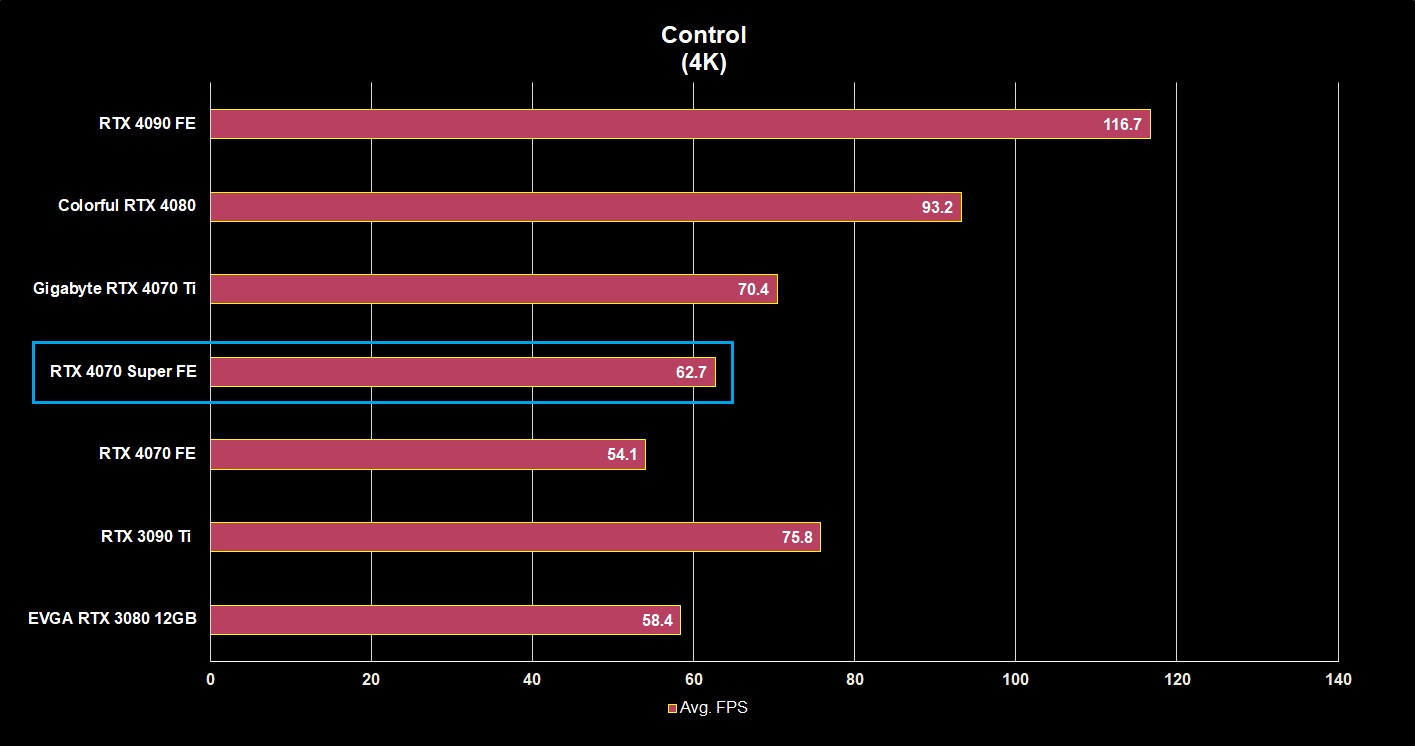
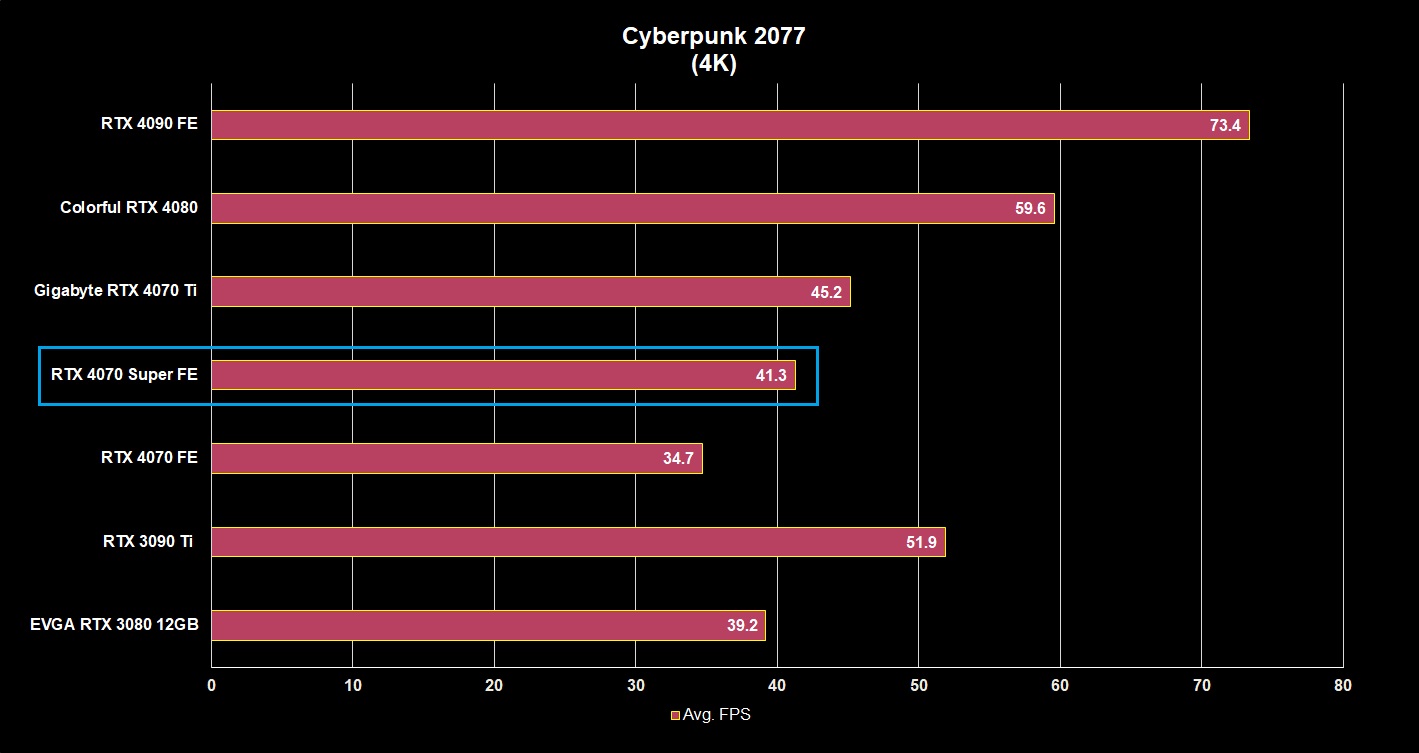
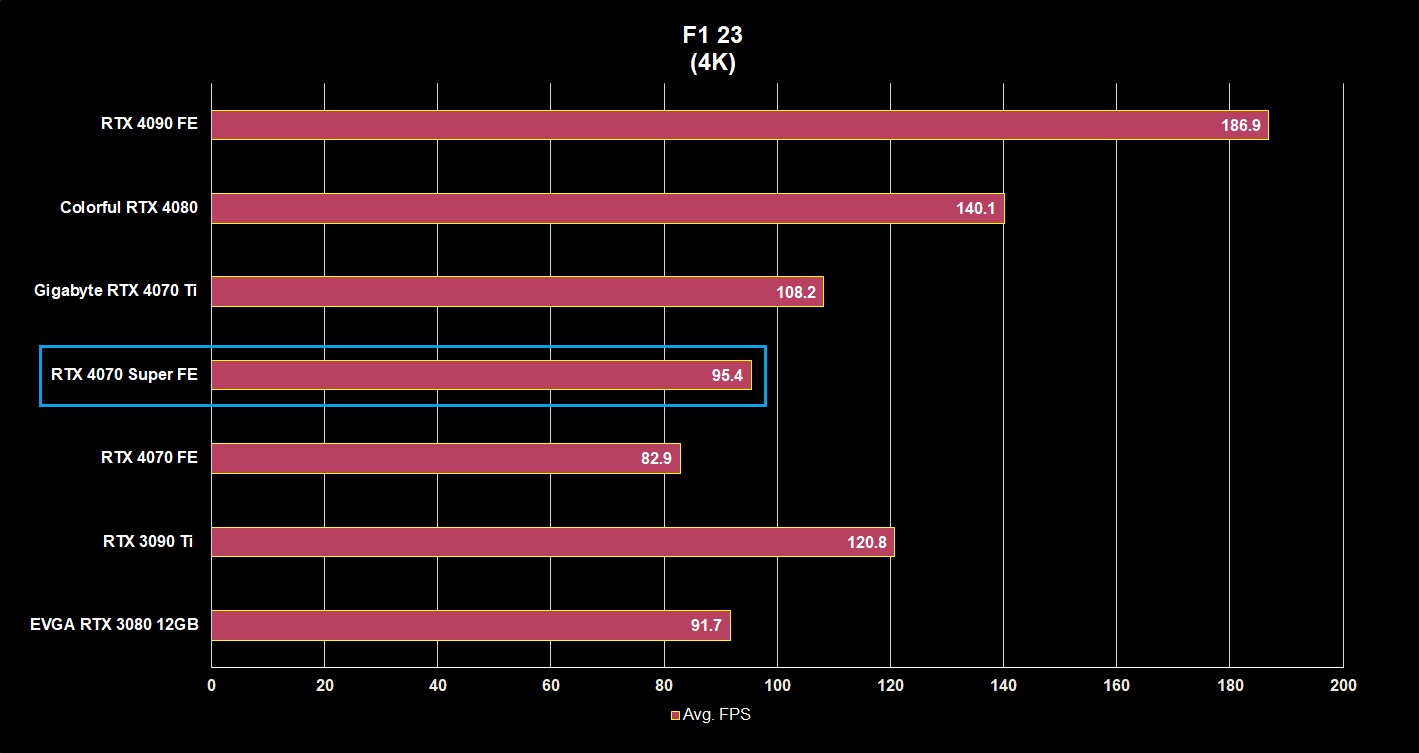
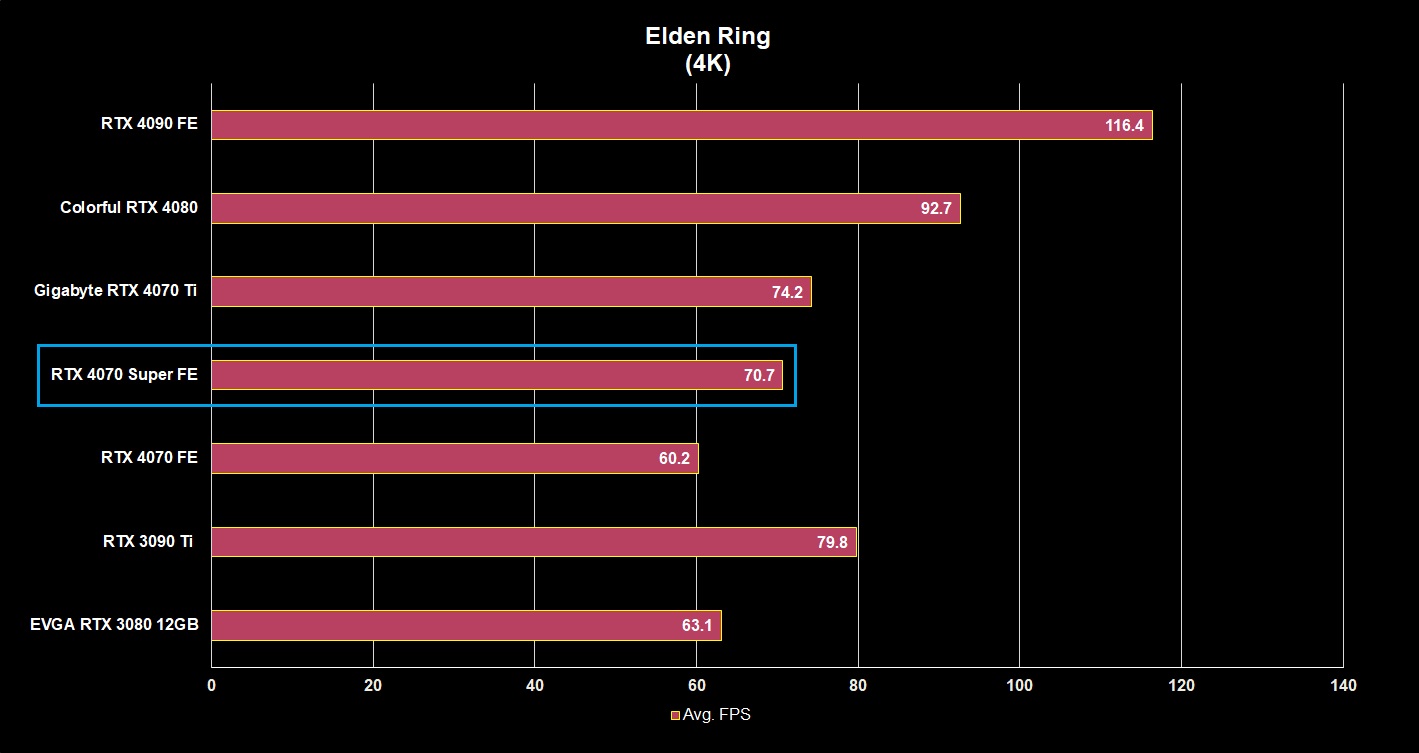


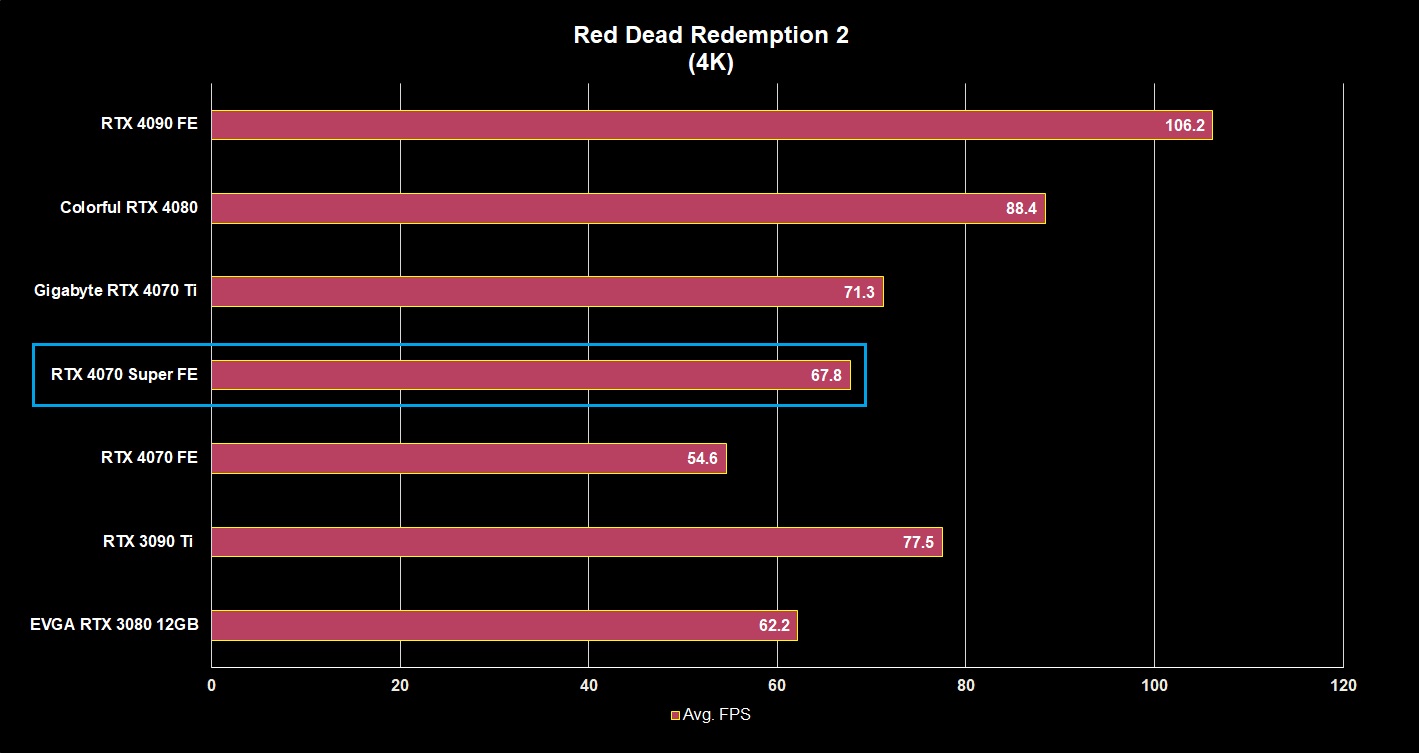


The 4070 Super does a decent enough job at 4K, delivering over 60fps in most titles. Demanding games like Starfield and Hogwarts Legacy ideally need an RTX 4080 or 4090 to make the most out of 4K, but if you're willing to turn down the settings a notch, you'll easily get playable framerates in these games as well.
The 4070 Super is 15% on average faster than the standard model, and it closes the gulf to the 4070 Ti by a considerable margin — it's not astonishing, then, that NVIDIA isn't going to sell that card, instead switching to the 4070 Ti Super.
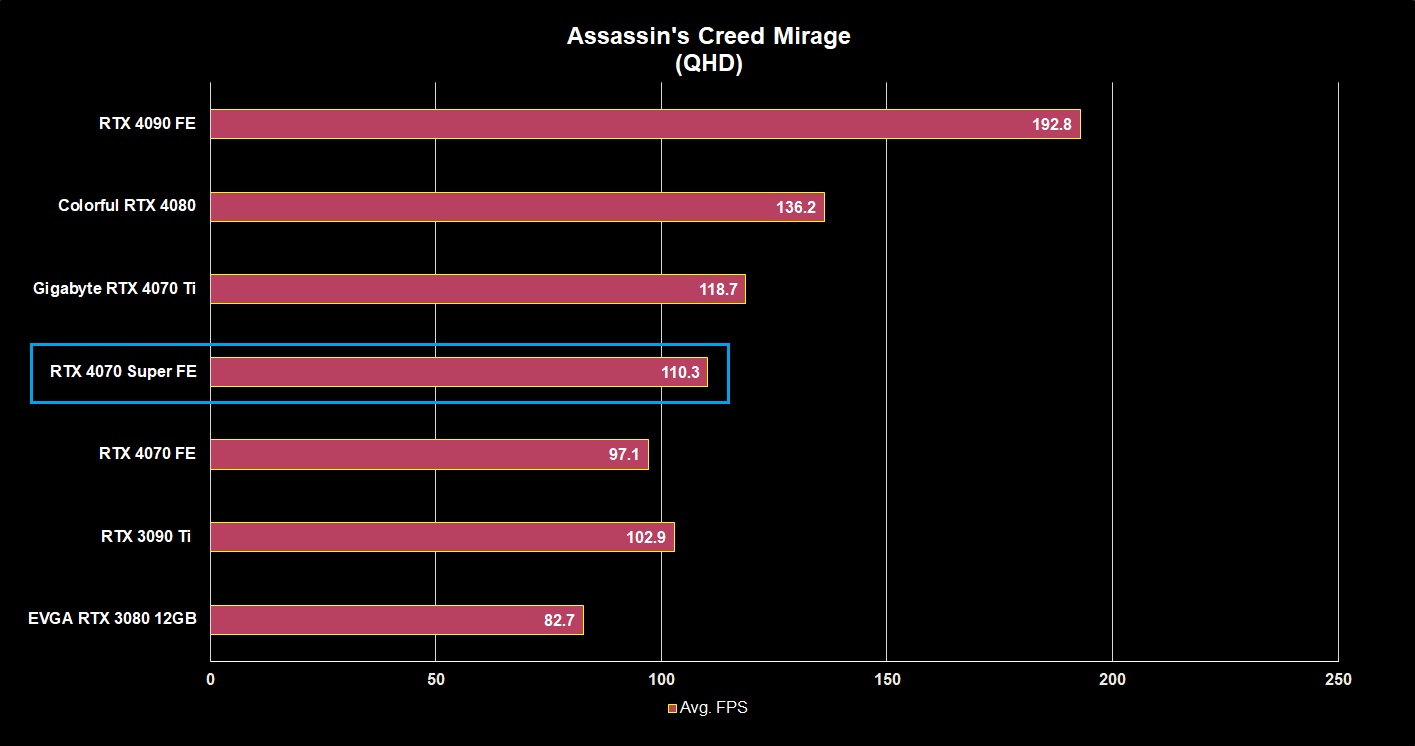




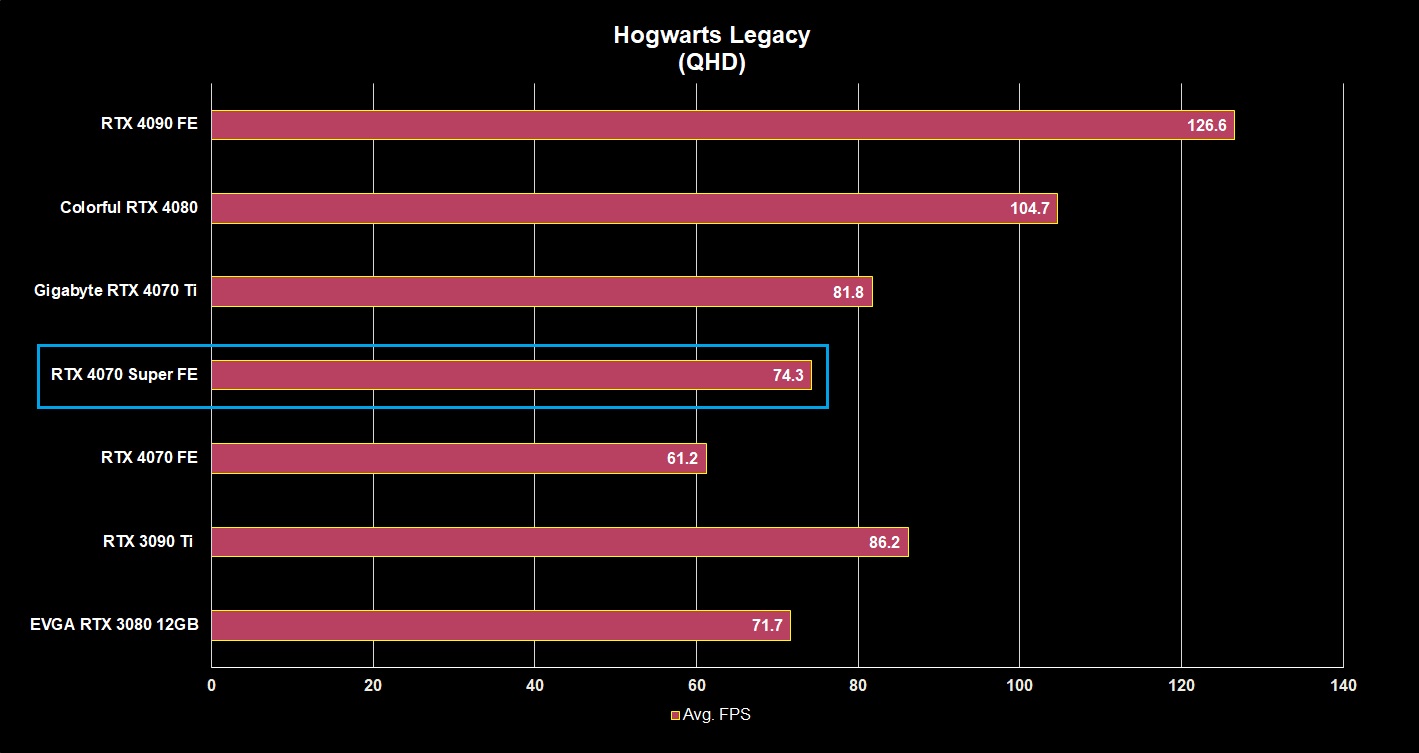
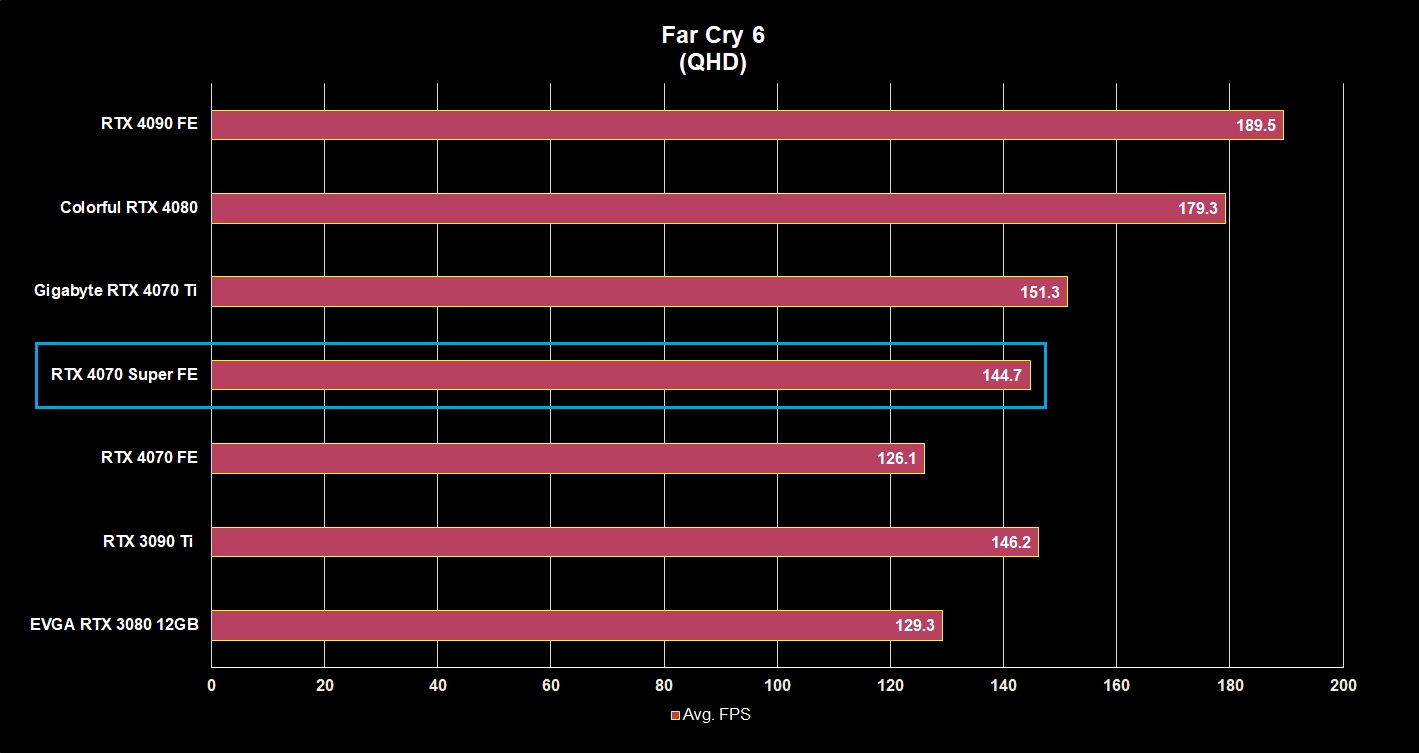
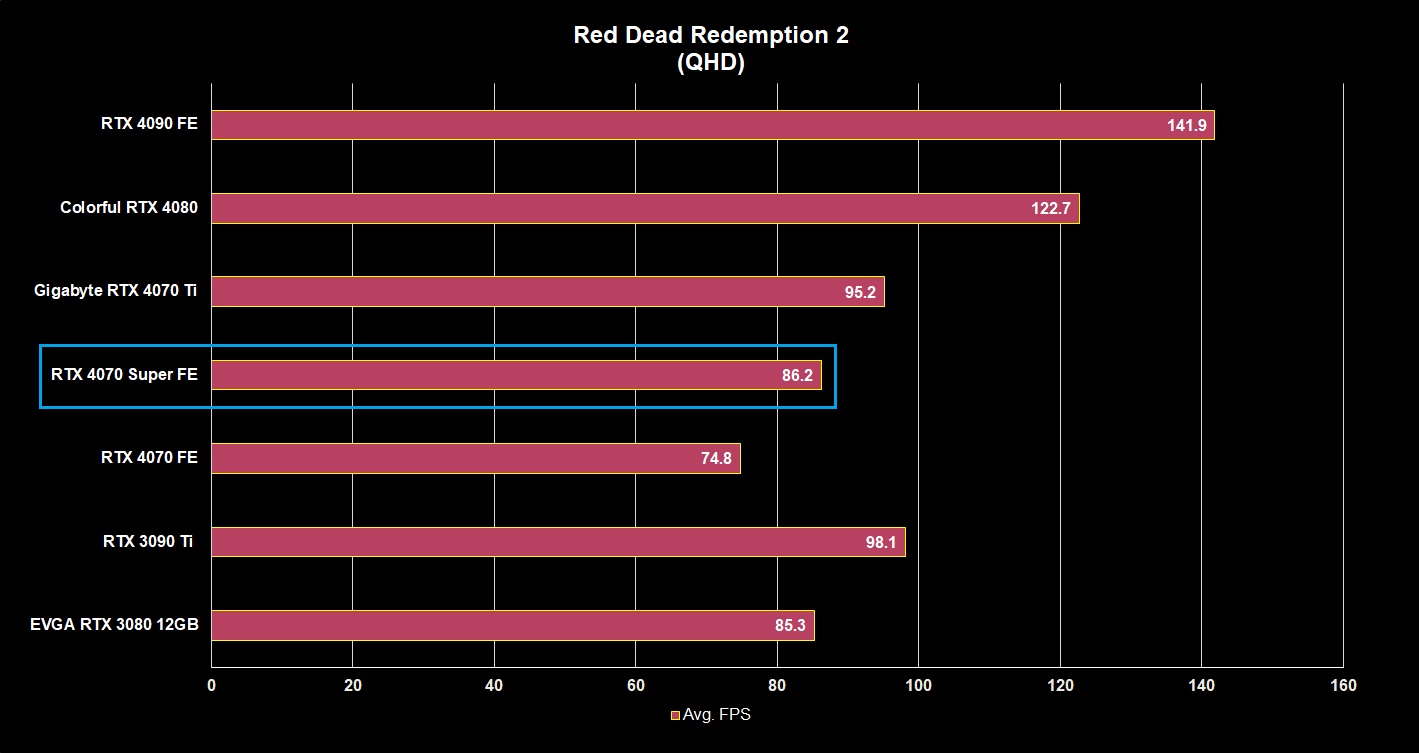

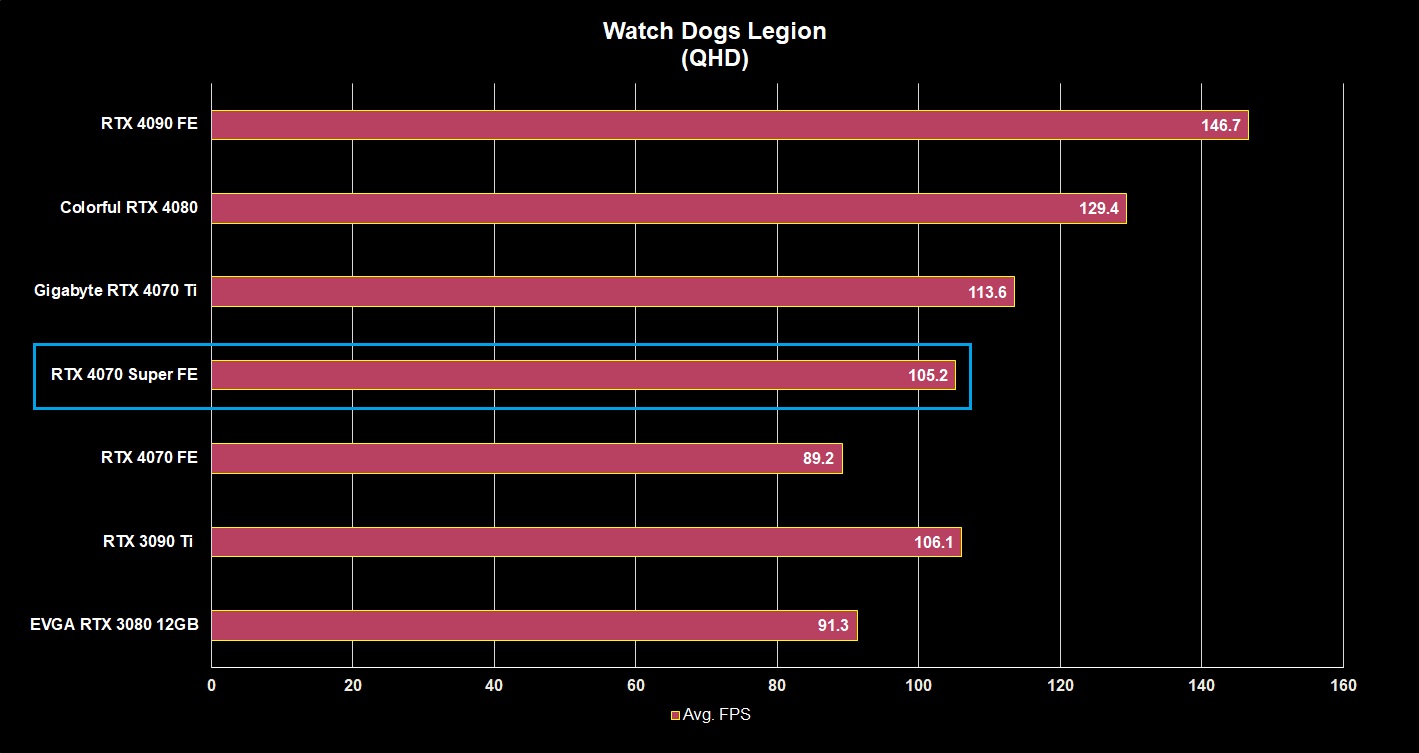
It is at 1440p where the RTX 4070 Super truly comes into its own, hitting over 100fps in all but the most demanding titles. The card is a great choice if you have a high refresh-rate QHD monitor, and while I'm currently using a 4K monitor, I'll admit that QHD is still the sweet spot when it comes to Windows gaming. The 4070 Super posts scores up to 17% higher than that of the standard model, and it closes the gap to the standard 4070 Ti.


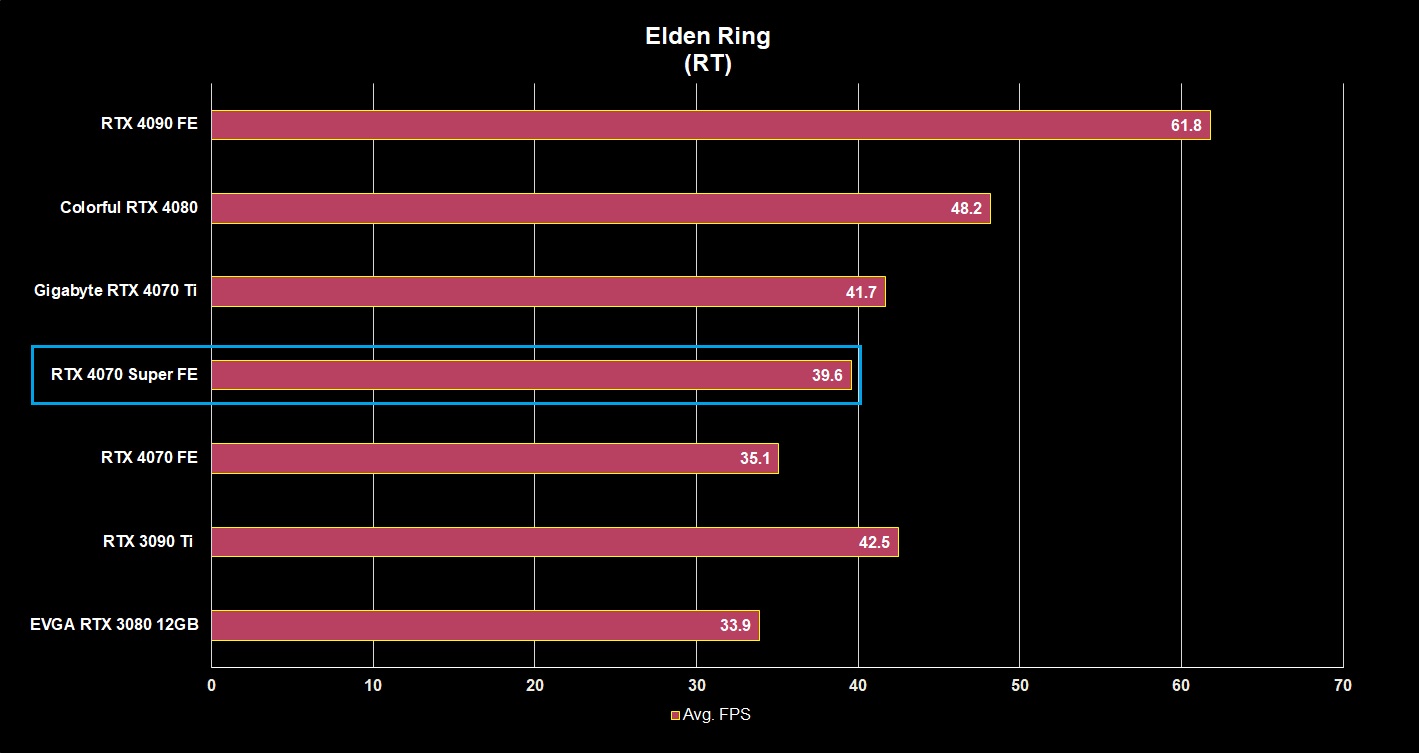


There are hundreds of games that offer ray tracing, and while 4K ray tracing with all the settings turned up is still limited to the RTX 4080 and 4090, the 4070 Super does a great job at 1440p. This is where NVIDIA's differentiation comes into play, with DLSS 3 making a noticeable difference in all games. You get nearly double the framerates without any visible changes in quality, and with more games leveraging the feature, it is a key selling point of the 4070 Super.
NVIDIA GeForce RTX 4070 Super FE: The competition
Given the gains on offer with the 4070 Super, it doesn't make much sense to get the standard model anymore. If you need 16GB of memory, you should consider the 4070 Ti Super. It costs $200 more, but you get better performance at 4K, and the card is a great choice if you have a 1440p monitor that goes up to 144Hz and beyond.
AMD's Radeon RX 7800 XT is a great alternative, with the card offering 16GB of VRAM over a 256-bit bus. You miss out on features like DLSS 3, and the 4070 Super has a slender edge in most titles. That said, it costs $100 less, coming in at $499, so you get a great value.
NVIDIA GeForce RTX 4070 Super FE: Should you buy it?
You should buy this if:
✅ You want a GPU for 1440p gaming.
✅ You need a card that doesn't take up too much room.
✅ You need NVIDIA-exclusive features like DLSS 3 Frame Generation.
✅ You want a great value.
You shouldn't buy this if:
❌ You need 16GB of VRAM.
The RTX 4070 Super is a terrific showcase, and it is one of the best GPUs you can get today — particularly if you're looking to maximize value. It has tangible performance gains over the standard RTX 4070, and the best part is that it doesn't cost a whole lot more. Sure, 16GB of VRAM would have made it that much more enticing, but this isn't a big limitation outside of a few titles that benefit from having more memory.
The 4070 Super delivers up to a 15% uptick in performance at 1440p over the standard model, and it is on par with the RTX 3090 — a sizeable achievement considering it is launching at a third of the price. It is decent enough at 4K as well, and while you don't get 60fps in all games, DLSS 3 makes a drastic difference, eking out the best possible framerates in demanding titles. Frame Generation continues to be NVIDIA's marquee selling point, and it gives the 4070 Super a distinct edge over the likes of the 7800 XT.
Ultimately, the RTX 4070 Super does enough to stand out in the mid-range category, and it is an easy recommendation if you need a new GPU in 2024.

Harish Jonnalagadda is a Senior Editor overseeing Asia for Android Central, Windows Central's sister site. When not reviewing phones, he's testing PC hardware, including video cards, motherboards, gaming accessories, and keyboards.
